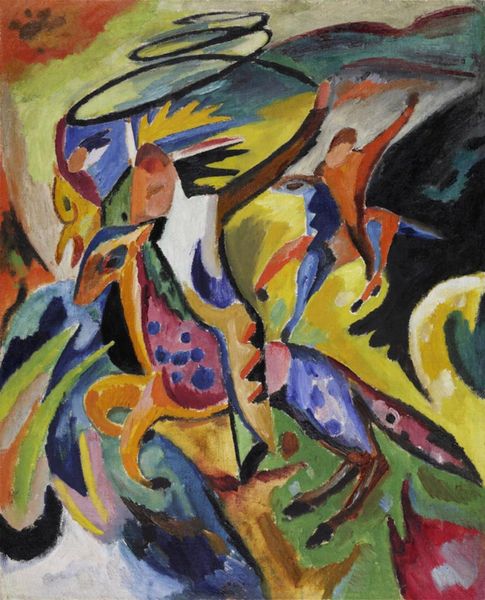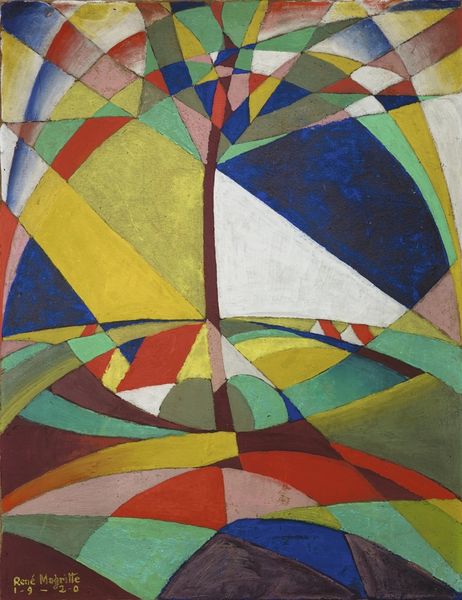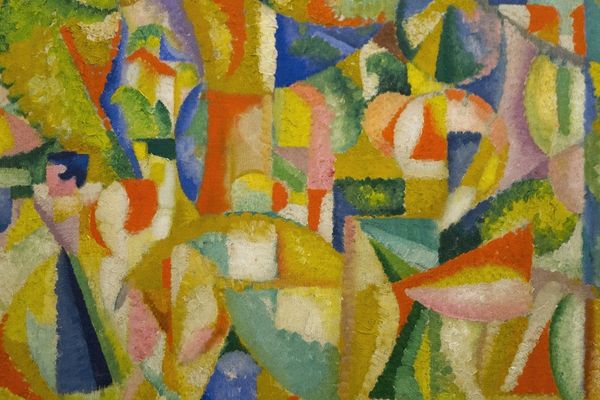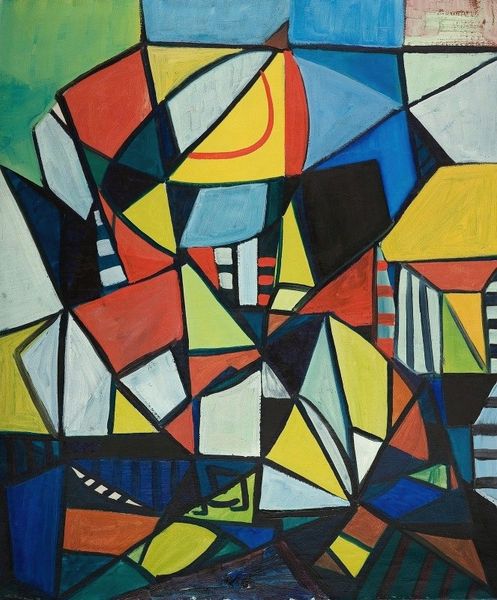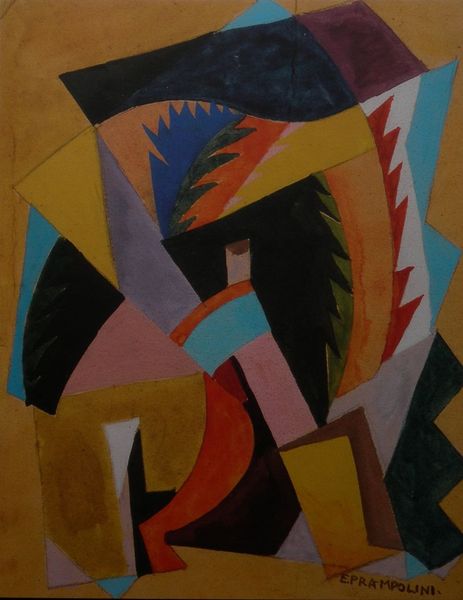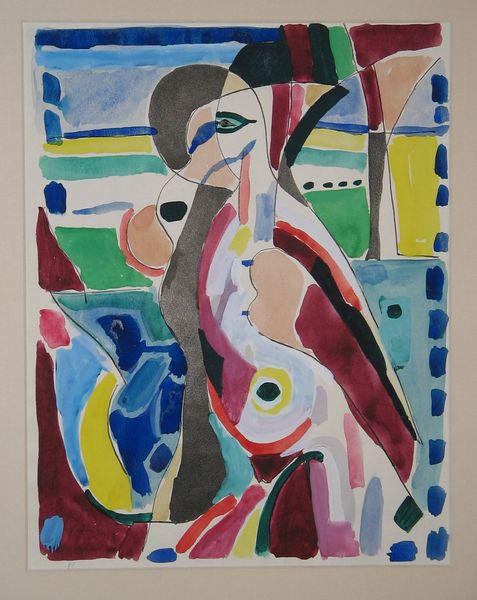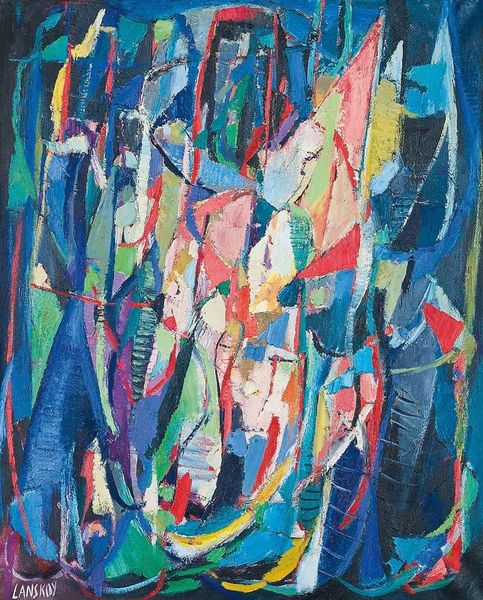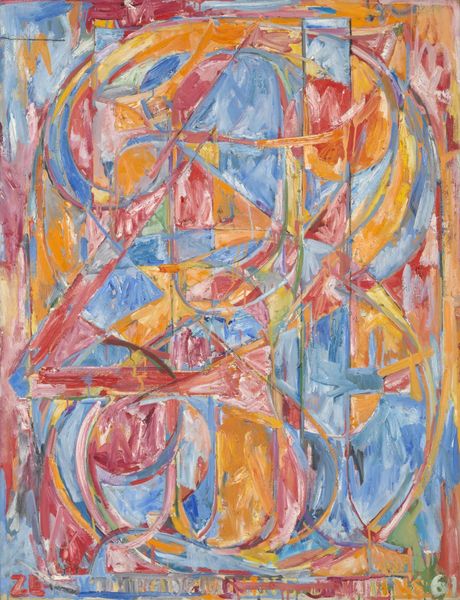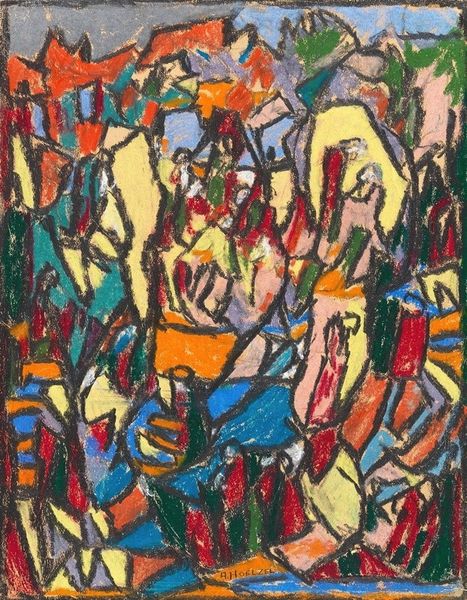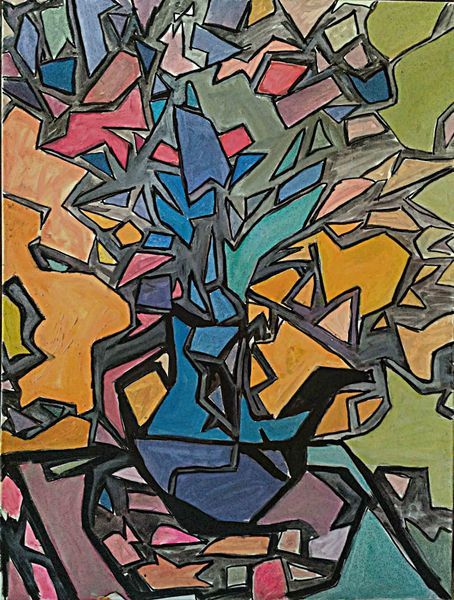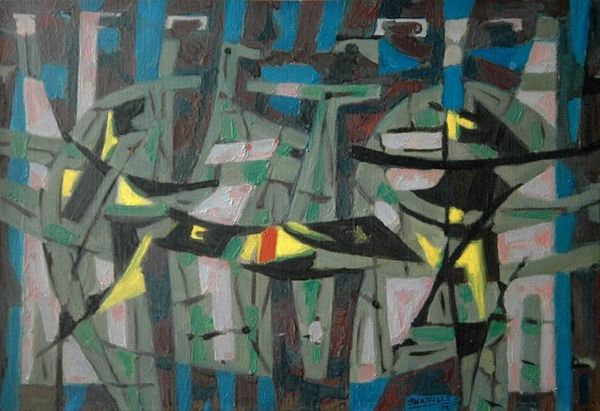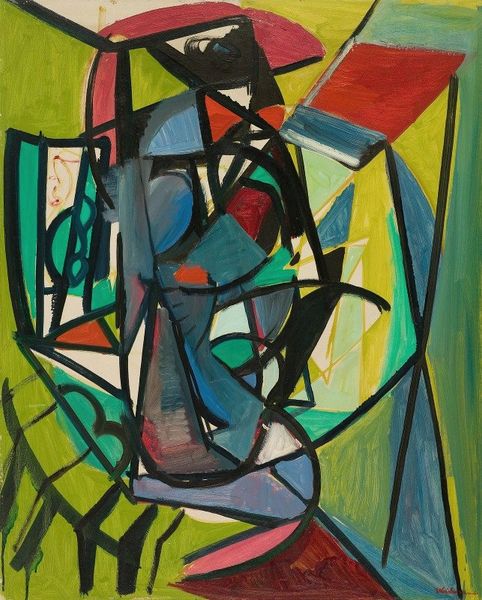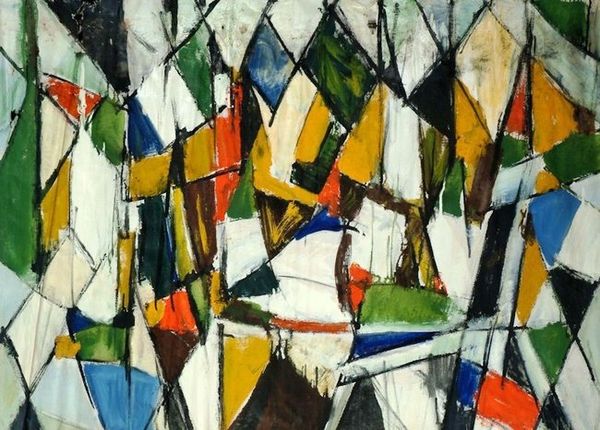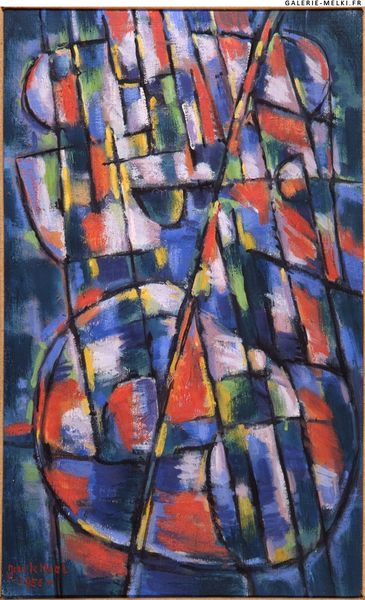
Copyright: Richard Mortensen,Fair Use
Editor: Here we have Richard Mortensen’s "Movement in Nature," an oil painting from 1938. It's such a dynamic composition, almost chaotic, with all these clashing colors and fragmented shapes. How do you interpret this work? Curator: I see a reflection of the anxieties of the interwar period. The fragmentation of form echoes the fracturing of societal norms and the rise of political instability across Europe at the time. Mortensen’s choice of clashing, almost jarring colors, alongside the geometric shapes, conveys a sense of unease, even a violent dismantling. Editor: That's interesting, because I also see vibrancy. Is it possible to view these fractured forms as…rebellious? Curator: Absolutely. Think of Fauvism and Expressionism. Mortensen could be critiquing traditional artistic conventions but also mirroring the societal shifts of the time. How does the title, "Movement in Nature", then relate, in your view, to all that fragmentation? Editor: Maybe it is not "nature" in a traditional sense, but the relentless movement of history itself, a force reshaping the world. A powerful statement when we consider when this piece was painted. Curator: Exactly. The work could be exploring not only the destruction of war, but the construction of new artistic and social landscapes. We are dealing with an image that serves as a protest but also hints at what may come. Editor: So it captures the fear but also a glimmer of hope in a time of radical transformation. It's amazing how much history and meaning can be packed into an abstract piece. Curator: Precisely, this artwork challenges us to consider historical context, the artist's intent, and, importantly, our own contemporary lens through which we interpret art.
Comments
No comments
Be the first to comment and join the conversation on the ultimate creative platform.
